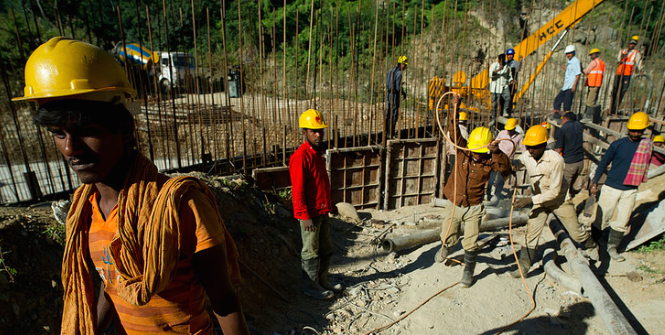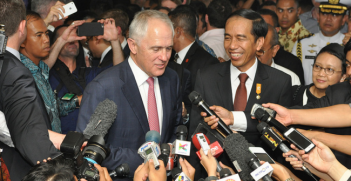The Benefits of AIIB Stretch Beyond Asia

The Asian Infrastructure Investment Bank will provide opportunities to the entire region for economic and social development and Australia can only benefit from such a situation.
If Asia is to realise its potential as a major driver of global economic growth in coming decades it will need to build trillions of dollars in new infrastructure.
Take as an example the neighbourhood that includes India and Pakistan. A study a few years ago by the South Asian Association for Regional Cooperation found a dizzying array of transport projects in the area waiting to proceed – 16 aviation gateways, 10 marine gateways, 10 regional road corridors, five regional rail corridors and two regional inland waterways corridors.
The shortfall in Asia reflects the situation across the world, with the global infrastructure gap more like a chasm. According to the B20, the business advisors to the G20, by 2030 there will be a global need for up to US$70 trillion in additional infrastructure capacity. But under current conditions only US$45 trillion is likely to be realised, leaving a gap of up to US$25 trillion.
What is holding these projects back? In many cases it is a lack of finance. The balance sheets of governments around the world are tight and appetite for debt is limited, despite low interest rates. Fiscal constraints are leaving governments looking for alternative ways to fund infrastructure.
It is in this context that the Asian Infrastructure Investment Bank (AIIB), founded by China and now including Australia as a member, has the potential to transform economies throughout the region. The AIIB’s $100 billion capital base will go some way toward bridging the region’s infrastructure gap, particularly if it uses those funds to leverage private-sector support for projects.
New infrastructure has enormous potential to improve living standards for local people. Each year in Asia hundreds of millions of tonnes of food are rendered unsuitable for human consumption because of the lack of an efficient supply chain between the field and the consumer. Investing in refrigeration to form a cool chain can help the region overcome a major source of food insecurity and allow people to get the nutrition they are seeking.
Infrastructure is an important enabler for economic development, fostering the urbanisation of a growing middle class and helping to meet its demand for housing, roads, public transport and commercial accommodation.
And this is where the benefits start to become apparent for Australia and other countries that are unlikely to be direct recipients of funds from the AIIB. As our region develops, its need for goods and services will grow, driving demand for our resources and investment capital. For example, Australia provides high-quality food to discerning consumers but we can also provide skills and transfer knowledge to meet the challenge of feeding the growing population of our region.
Projects bankrolled by the AIIB have the potential to improve trade by easing the movement of goods across borders. Improved ports and roads mean that goods can move far more efficiently from producer to consumer, creating swathes of new opportunities for importers and exporters. Regional supply chains, in which inputs and processes come from multiple places, are far more achievable with easy movement between locations.
Investment in Asia’s infrastructure, particularly in ports, airports and energy supplies, will dramatically improve the experience for commercial suppliers to and from Australia. For some small businesses, this improved infrastructure will be the difference between embarking on international trade and staying exclusively within a domestic market.
Australia’s initial reluctance to join the bank, and the continued reticence of the United States, stems from concerns about the Beijing-backed institution’s governance. Indeed, our $1 billion contribution is only a small fraction of the total. Australia is right to take a cautious approach and to insist on high governance standards, which are necessary for the institution’s success. We should use our influence to make sure the AIIB’s funds are managed wisely and disbursed transparently. We will have more success in achieving these aims from inside the organisation than from outside it.
The AIIB will be most effective if it seeks to complement rather than compete with the efforts of similar entities, such as the new Global Infrastructure Hub in Sydney, which aims to unlock an additional $2 trillion in global infrastructure capacity by 2030. They will maximise their impact if they work in harmony.
Infrastructure is critical to the continued growth and development of our region. The B20 found that closing the global infrastructure gap could create up to 100 million additional jobs and generate $6 trillion in economic activity every year.
The AIIB is an important addition to the efforts to drive this development but its success depends on the collaborative efforts with the existing initiatives and harnessing private sector investment.
Kate Carnell AO is CEO of the Australian Chamber of Commerce and Industry. This article can be republished with attribution under a Creative Commons Licence.





